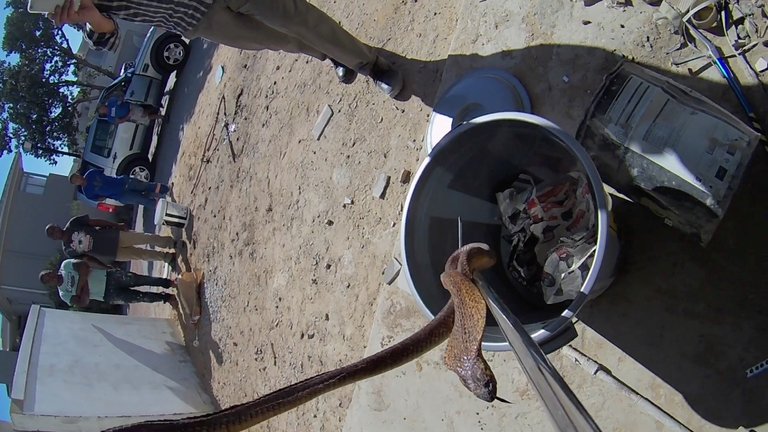On my way to a client this morning I was called by someone in Sunset Beach who had just found a Cape Cobra amongst some building rubble at a construction site.
The cobra was very defensive when I got there, but I captured it, gave a quick educational talk to the people there, and then safely released it elsewhere.
It's very easy to hurt a snake's spine or ribs when using tongs, so I prefer to use the hook-and-tail method whenever possible. However, in this case I had to use my left hand to manage the net so I unfortunately had to use my tongs.
Please try to not ever handle snakes yourself - it's safest to leave handling to the experts and rather just keep an eye on the snake until one of us arrives. Luckily no-one got hurt and I was able to release the snake elsewhere.
--

Also known as a "Koperkapel" or "Geelslang" in Afrikaans, the Cape Cobra is a common venomous snake that can range in colour from yellow through reddish brown to black.
When threatened or cornered, Cape Cobras are quick to spread a hood and won't hesitate to bite. Their venom is highly neurotoxic (the most potent of any African cobra), attacking the nervous system and causing respiratory collapse (the victim stops breathing).
Cape Cobras feed on rodents, birds, lizards, toads, and other snakes.
Oviparous, they lay 8-20 eggs in mid-summer.